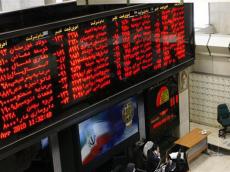|
|
TODAY.AZ / World news
Impact of banking interest rates on Iran’s sinking capital market
20 June 2016 [11:00] - TODAY.AZ

Catastrophic decline in Tehran Stock Exchange (TSE) over the past two and a half months has drawn attention in Iranian media outlets, causing public debates on the relation between the market’s weak performance and banking interest rates.
The TSE experienced further falls in share prices in June as its main index fell by 878 points to close at 73,027 June 19, reaching its lowest level since February.
While Iranian government is making efforts to reduce banking interest rates with an aim to give a boost to the country’s depressed economy by lowering inflation rate, commentators have expressed mixed views on the impact of banking interest rates on the stock market.
This comes amid a recent decision by a group of Iranian bankers to lower deposit interest rates from the current 18 percent to 15 percent, starting June 21.
Many observers are hopeful that Iran’s capital market, in particular TSE, would experience a jump after reducing banking interest rates.
Others, however, have a conflicting opinion, suggesting that the reduction of the interest rates alone is not capable of providing investors with a motive to move their assets from banking accounts to capital market, as the weak performance of the TSE over the past 10 weeks does not offer an attractive prospect.
This group of commentators also argued that the decision cannot help the country’s industrial sector and eventually the value of stocks, as the bankers have failed to decide on lowering interest rates for facilities allocated to goods-producing firms.
Another reason for the incompetency of the decision is that most of Iranians tend to keep their assets in deposit accounts rather than investing in industry or purchasing shares at the TSE, as bankers offer higher rate of interest rates for deposit accounts.
Technically, banking interest rates in Iran are higher than the annual income from investment in the country’s industrial sector, given the fact that the rate of return from investment in the country’s industrial sector is only 8 percent.
The current interest rate on the loans made to borrowers stands at about 22 percent.
Indeed, cutting banking interest rates would help the stock markets if the bankers decreased interest rates on the loans made to industrial firms.
The industrial firms and capital market would gradually show signs of a return to profitability if the bankers agree to reduce the interest rates on loans.
Nevertheless, the reduction of banking rates alone cannot lead to improving the capital market’s current situation. In order to give a boost to the capital market, Iran needs to adopt new policies and take several measures aimed at helping economy to climb out of the recession.
Another reason posing obstacles to the growth of stock markets in Iran is that financing the projects in the country is mostly carried out through banks on the contrary to the global common practices, where projects find their financers at stock markets.
On the other hand, banks appear reluctant to allocate a large part of their facilities to the goods-producing industries due to the low rate of return from manufacturing sector.
The decision on lowering the interest rates follows a shrinking economic inflation in the country.
In 2013, inflation was somewhere above 40 percent. Now it hovers around 10 percent.
Given the aforementioned figures and facts, it appears that lowering banking interest rates is a crucial step forward helping Iran’s crippling economy, but not sufficient as the country’s policymakers still need to implement reforms to entrench macroeconomic stability.
URL: http://www.today.az/news/regions/151917.html
 Print version
Print version
Connect with us. Get latest news and updates.
See Also
- 30 September 2025 [09:00]
Germany, France, Poland warn Russia against air intrusions - 30 September 2025 [08:00]
Putin signs law to denounce EU anti-torture treaty - 29 September 2025 [23:30]
Saudi Arabia selected for Kia’s PV5 pilot program - 29 September 2025 [22:07]
China launches visa for foreign IT - 29 September 2025 [21:40]
bp commits massive funding to Gulf region operations - 29 September 2025 [21:05]
UK authorities intend to build new cities - 29 September 2025 [20:34]
China launches 2 Earth-observation satellites - 29 September 2025 [08:00]
China launches low Earth orbit satellite group - 28 September 2025 [20:00]
Erdogan’s US visit seen as potential turning point in Ankara–Washington ties [OPINION] - 28 September 2025 [13:10]
Moldova holds parliamentary elections
Most Popular
 Erdogan’s US visit seen as potential turning point in Ankara–Washington ties [OPINION]
Erdogan’s US visit seen as potential turning point in Ankara–Washington ties [OPINION]
 Syrian court issues arrest warrant for former president Bashar al-Assad
Syrian court issues arrest warrant for former president Bashar al-Assad
 Ministry of Economy staff honor martyrs at Victory Park on Memorial Day
Ministry of Economy staff honor martyrs at Victory Park on Memorial Day
 Chilean senate delegation visits Shusha and Khankendi on Remembrance Day
Chilean senate delegation visits Shusha and Khankendi on Remembrance Day
 Nikol Pashinyan highlights importance of regional cooperation for Peace in South Caucasus
Nikol Pashinyan highlights importance of regional cooperation for Peace in South Caucasus
 Patriotic war, national dignity, eternal remembrance [OPINION]
Patriotic war, national dignity, eternal remembrance [OPINION]
 Armenian PM: I am happy to report to international community that peace established between Armenia and Azerbaijan
Armenian PM: I am happy to report to international community that peace established between Armenia and Azerbaijan
